The noble metal jewelry is often subjected to various jewelry techniques. For example, silver is blackened in order to change the hue, to give contrasting lines in the ornamentation. Such items look unusual, they can be mistaken for antique, so it is necessary to wear properly silver jewelry. They do not show any defects, chips, or dullness, but you need to know how to store them and take care of them. What is the process silver nielloingIs it possible to do it at home?
Silver nielloing: what is the essence of the process. The popularity of aristocratic nielloed silver in the 17th century
Blackening or silver patination is a type of decorative-applied art that appeared among the Russian people in the XVII century. The process of this type of art originated in the town of Veliky Ustyug, it was here that masters working with precious metals lived.
The reason for this was the geographical location of Veliky Ustyug. Once upon a time all the trade routes from the west to the east and back passed through it. Through this city passed valuable goods, precious metal.
Naturally, folk craftsmen quickly realized that they could make good money in this business. This is how the silver and blacksmithing trade emerged, which turned from a way of earning money into an art form. Virtually every craftsman could perform the technique of silverware blackening, and did it by hand.
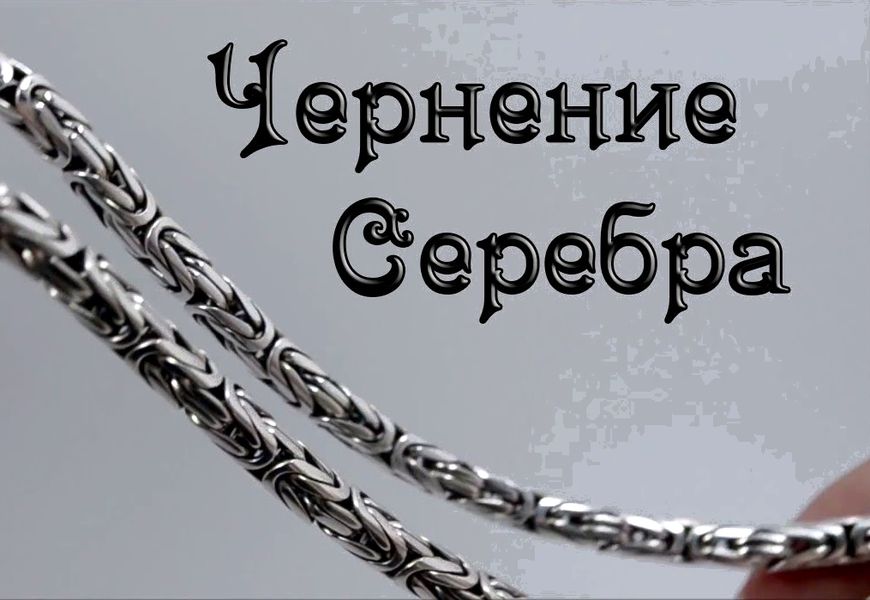
Whole dynasties of silversmiths emerged, who did not reveal the secret of silver processing technology, passing it on by inheritance only to their descendants. Because of this, the silver-ink industry almost disappeared altogether.
Almost all silverware was blackened: dishes, from spoons to vases; snuffboxes; caskets; and engravings. More experienced craftsmen in Veliky Ustyug were able to use this technique to make paintings and icons.
Silver items subjected to the blackening procedure today represent historical heritage and works of art. Rare examples of the 17th century have survived to this day. They can be found only in antique stores, jewelry salons and museums.
In addition, archaeological excavations suggest that nielloed silverware was made by ancient people thousands of years ago.
On the modern territory of Kievan Rus researchers find earrings-moons, bracelets, pendants with niello, the date of manufacture of which is the 10th century. European masters engraved nielloed images - portraits and landscapes on silver sheets. Asiatic peoples decorated weapons, jewelry, as well as household items such as caskets, combs, hair clips, mirrors with niello.
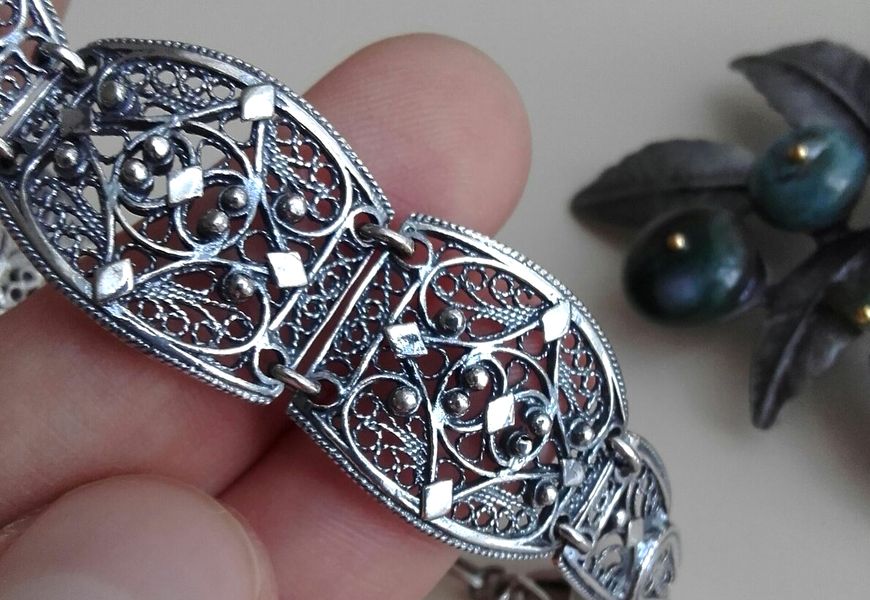
Types of silver jewelry
Jewelry silver is divided into different kinds. They are distinguished from each other by their appearance, composition, characteristics, and the items that are made of them
- Sterling Silver is the strongest alloy. It is distinguished by its color of perfect whiteness. Sterling silver does not turn black. 925 proof. It is successfully used for the production of premium jewelry. It is also used to make cutlery.
- Nielloed silver. All the jewelry that has come down to us from the last century is undoubtedly made of nielloed precious metal. This type of alloy is considered aristocratic. It was made by depositing sulfurous oxides of silver and copper on the finished piece of jewelry. Then the ornaments were heated, after what on its surface appeared dark ornaments. Such jewelry was often worn as talismans, amulets.
- Oxidized Silver. Oxidizing is a modern process of coating the surface of jewelry with a protective oxide film. This film consists of silver oxide. Oxidizing a precious metal not only protects the jewelry from external influences, but also helps to preserve it. color.
- Rhodium-plated silver. Rhodium plating is often used in jewelry making. It is a noble metal, similar in appearance to silver, but much more durable. Rhodium plating serves as a protective layer for the jewelry. The way Rhodium plating is not too expensive, which is why it is so common on an industrial scale. Rhodium plating does not lose its luster, does not tarnish, and retains its white color.
Precious metal is necessarily subjected to processing. This gives it positive properties: the right degree of hardness, strength. Treated metal does not rust and does not oxidize.
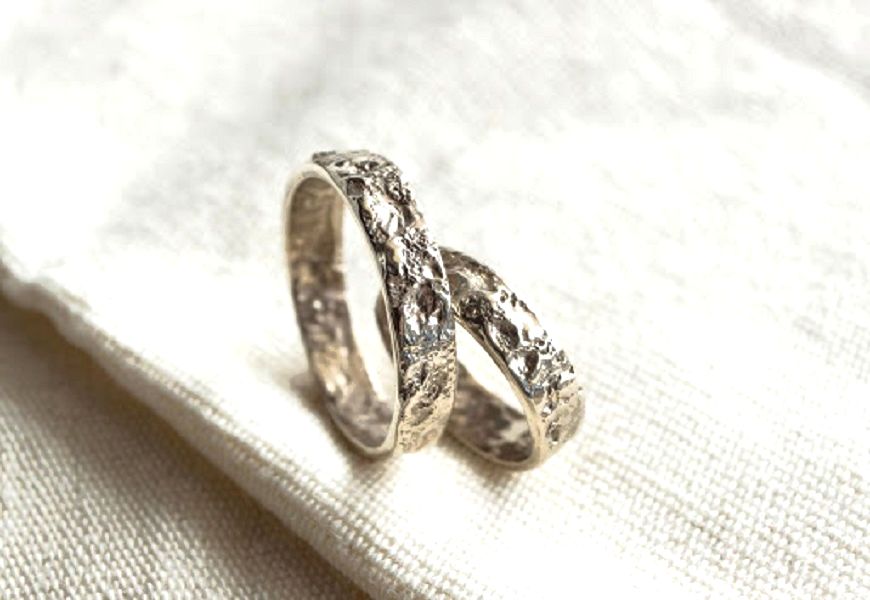
Methods of making niello
As already mentioned, the nielloing of precious metal by folk craftsmen began more than 3 centuries ago. To this day, niello is one of the classic methods of decorating articles made of precious metals. With this method, silver jewelry is given a black color and all kinds of shades of it. The blackening process gives the piece a noble and contrasting aspect. Blackening also helps to hide some defects, for example the joints of seams on the ring or bracelet. Moreover, nielloing makes the silver jewelry strong and lasting.
Jewelry that has a flat surface is not blackened. At first, the jewelry is engraved and peculiar patterns with hollows are created. The niello is subsequently melted into these recesses. The depth of the engraving is about 3 mm.
In turn, niello is an alloy that consists of copper, silver, sulfur, and lead. These metals are melted down and applied to the surface of the jewelry in liquid form. The heated metals form a chemical reaction. As a result of the reaction, the designs and patterns take on a black color, the precious metal itself successfully contrasting with it.
The main ways alloying for blackening:
German
Copper and silver are melted down, the whole compound is stirred constantly while being heated. Molten lead is poured in there. Then the already prepared composition should be mixed with sulfur powder, preheated. It is important to stir the alloy all the time. By stirring, all of the metals that make up the alloy react perfectly chemically with each other.
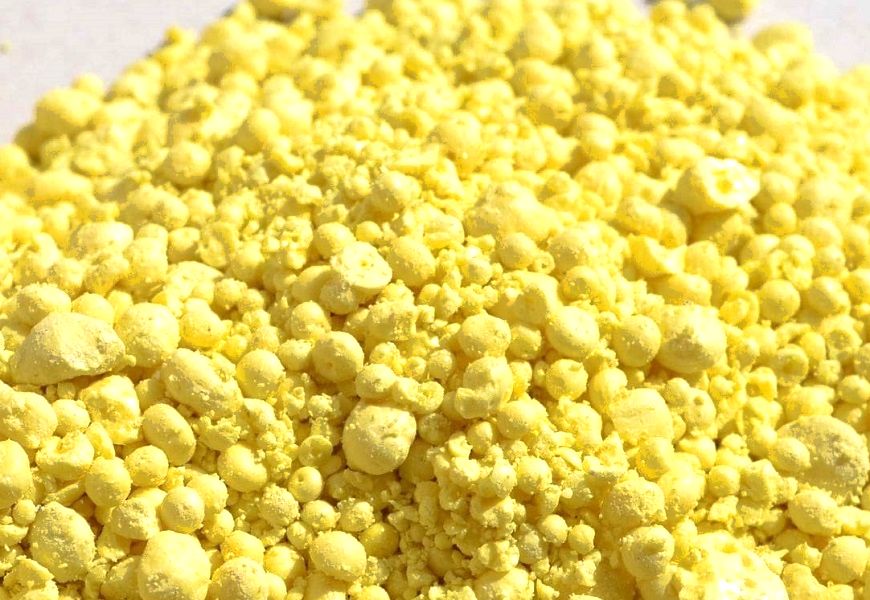
Modern Moscow
This method involves melting the following metals: copper, silver and lead. In the process of melting small doses of sulfur powder are poured, after which the composition is filled into the cast-iron pan. Then the alloy is left to solidify, solid it is crushed, and it is remelted again. In the second stage of heating, the composition is mixed with sulfur and flux.
Authored by A. G. Spassky
This unique method was invented by Spassky Anatoly Grigorievich, a Soviet metallurgist specializing in foundry production. The author's method implies that all the elements for the alloy are prepared each separately. These are silver, copper, and sulfurous lead. After melts all elements are added to a common container one by one and stirred.
Methods of niello application: dry and wet
There are two ways to blacken silverware:
- Dry method. The silver surface should be moistened with a special solution for silver niello, then a fine powdered niello is applied. The prepared jewelry is dried and fired in a muffle. The necessary temperature for firing: 300-400 degrees Celsius.
- Wet method. This refers to niello made in the form of a mushy mass, diluted with water, using a brush it fills the engraved cavities. The niello is then left in a muffle for some time, waiting for the water to evaporate. Heated niello softens, melts and spreads over the drawing, if the decoration is small, then use a special gun for soldering.
After the blackening procedure, the product is sanded and brushed.
Silver blackening technology
You can blacken silver using several methods.
Mechanical impact
The mechanical method of blackening is a direct impact of certain substances on the surface of the silverware.
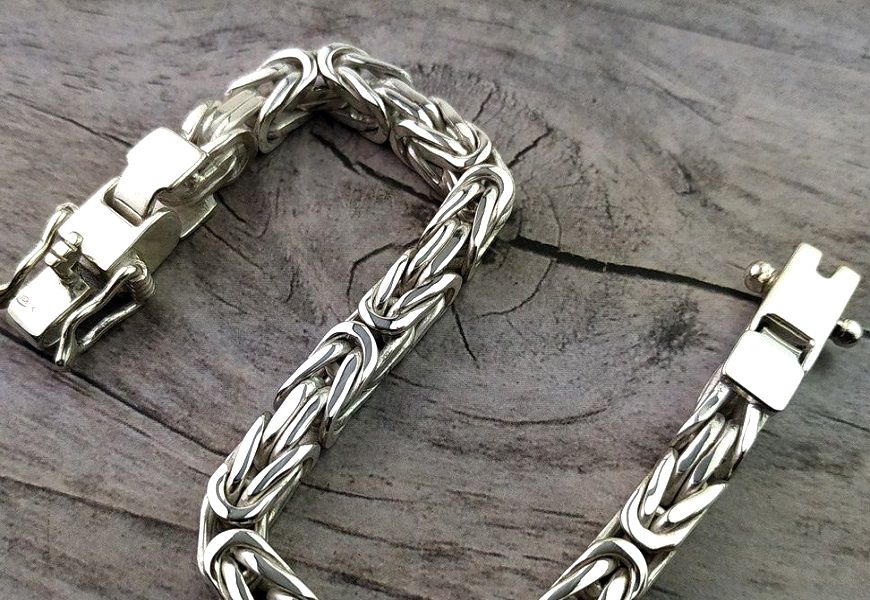
Applying a mixture of graphite with iron oxide and turpentine to silverware
First, graphite and iron oxide are mixed, then turpentine is added to the composition. As soon as the composition dries on the surface of the jewelry, it is wiped with a soft cloth, fiber or chamois, which was previously moistened in alcohol.
Electrode electroplating
Galvanic silver is obtained by mechanical blackening. The method electrolysis with electrodes helps to make the precious metal blackened and aged. But unfortunately, the niello applied by this method is short-lived and will wear out quickly. Electroplating is ideal only for blackening inexpensive silver costume jewelry.
Chemical exposure to a mixture of reagents when the temperature rises
The chemical method of blackening is recognized as the most ideal in effectiveness and duration. It involves mixing silver, zinc, lead and sulfur in the form of a powdered composition. This powder is poured into the engraving recesses of the jewelry and heated to a temperature of 300-400 degrees. Under the influence of high temperature, the powder does not simply melt, but penetrates into the silver alloy. The jewelry is heated as long as necessary so that the metal alloy does not become dark or black.
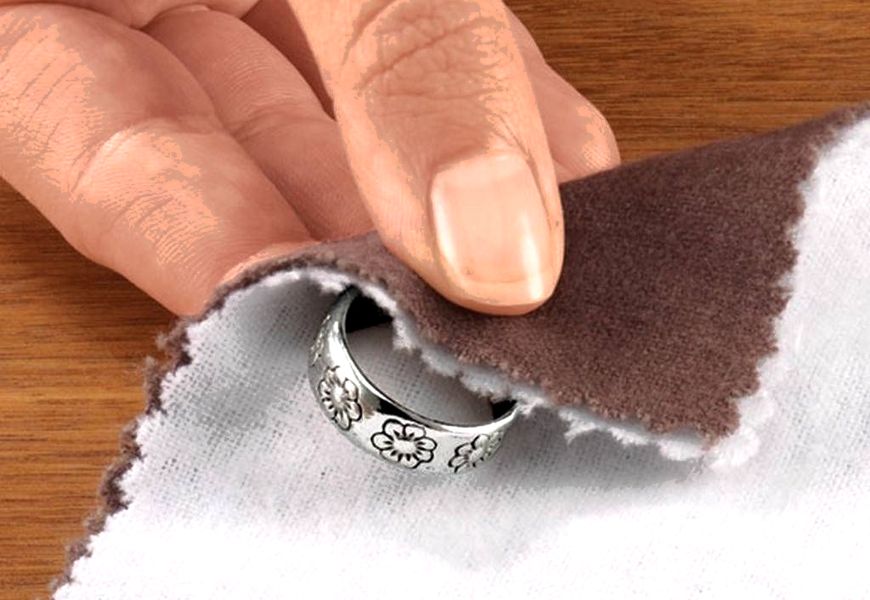
How to blacken silver with improvised means at home
You can also darken the precious metal yourself at home, using readily available and inexpensive improvised means. Common recipes for patinating silver at home.
Darkening with a boiled egg
One of the easiest ways to darken silver at home. You will need:
- chicken egg - 1-2 pcs;
- container that can be tightly closed;
- thin thread, also suitable fishing line.
Stages of blackening:
- The eggs need to be boiled.
- Clean the dirt off the silver jewelry.
- Cut the boiled eggs in half, with only the yolks needed.
- Put the yolks on the bottom of the container, hang the silver jewelry on a string, fasten it to the lid of the container and close tightly. The ornament should dangle inside the container, turning it periodically so that the blackness forms evenly.
- Take the jewels out after 5-6 hours.
How can an egg darken silver? There is actually a chemical process: the egg yolk releases hydrogen sulfide, which changes the color of the metal.
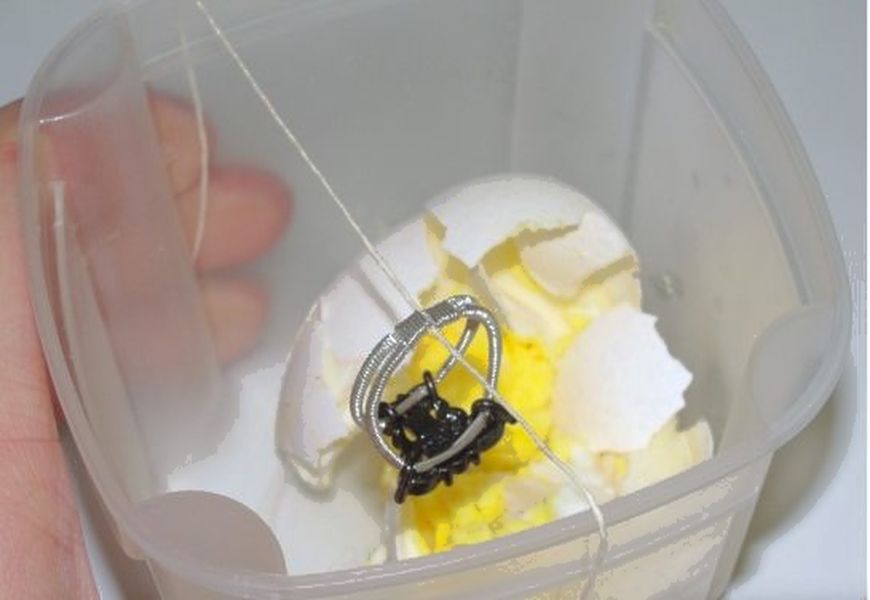
Sulfuric ointment and hair dryer
You can get blackened silver with the help of sulfur ointment and an ordinary hair dryer. It is necessary to heat the ointment with a hair dryer so that it becomes liquid. As soon as the ointment begins to flow, pour it over the surface silver jewelry. By the way, you may notice that already at the initial stage the metal will begin to darken. After the ointment hardens, sand the metal with a special sandpaper, and you can consider the blackening process complete.
Applying iodine
Iodine, which is available in the medicine cabinet of every housewife, is also an excellent tool for blackening precious metal. First, silver earrings or rings should be cleaned of fingerprints, grease marks and dirt. Then, using a cotton swab or tampon, the jewelry should be thoroughly dabbed with iodine and left to dry in the sunlight.
After it has dried, a little toothpaste should be squeezed out on a wool or suede cloth and wipe the silver jewelry with it. After polishing, the precious metal will shine, and the niello will be well fixed in all the cavities. The method of silver blackening with iodine is not only effective, but also cheap.

Advantages and disadvantages of the home method - how to age silver at home
Blackened silver has many advantages:
- It doesn't have to be cleaned all the time;
- It doesn't tarnish or darken because it's already black;
- A jewel that has been artificially aged looks like an antique and expensive.
If we talk about the disadvantages of blackening at home, it is important to note the risk of potential damage to the noble metal. Without exact knowledge and skills of the blackening technology, silver items can be simply spoiled.
Easy care for blackened silver
Nielloed silver must be cared for, and the rules for caring for it will be differ compared to if we were talking about an ordinary white precious metal.
Getting rid of blackness in 30 minutes
The easiest and most affordable way to get rid of the niello: clean the precious metal with a soda solution.
It is necessary to pour 2-3 teaspoons of baking soda in a pan with water. Put foil on the bottom of the container, put the decorations on top. Boil the contents of the pot for about 5 minutes. By the way, this method of cleaning is also applicable for tableware and silverware.
Another effective remedy for cleaning silver jewelry from blackening is citric acid. You can use both powdered citric acid and juice squeezed from a lemon.
Lemon juice is not as concentrated as citric acid and is more gentle on the blackness on silver.
How to clean silver from blackness with citric acid? Dissolve 100 grams of powder with half a liter of water in a dish, wrap silverware in foil, place it inside the container. Boil the solution for 15 minutes. Boiling in a lemon solution helps to make the piece whiter, shinier.
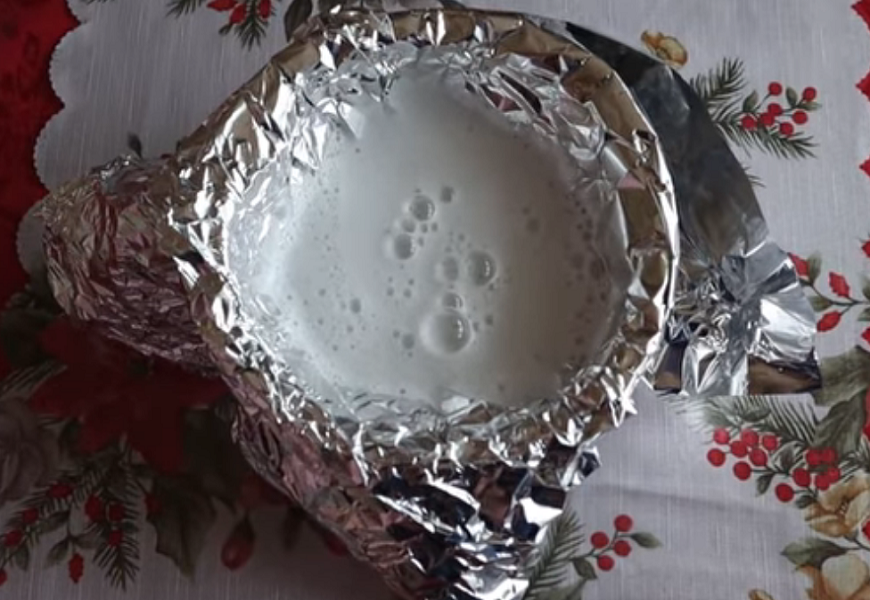
When blackened silver looks appropriate. How to choose the right jewelry
The black-treated silver jewelry is not meant for every day. They look perfect with the image under the ethnic style, animal style, boho style.
In order not to make a mistake with the authenticity of silver, you should buy in jewelry salons with a proven reputation, check the markings on the product and, if necessary, ask for a certificate for the goods.
You should be wary of buying jewelry over the Internet or on Avito. It is better to buy jewelry at a pawn shop or a pawnshop at a discounted price, because it will have already been checked by a local jeweler.
Video: getting rid of silver niello at home
Testimonial
I started wearing black silver a few years ago. Today it is one of my favorite pieces of jewelry. It feels unique, bohemian, magical and esoteric.


I wear nielloed silver jewelry and I am very happy with it. Especially because this metal is easy to care for. Cleaning once in a few months, and with available means, suits me fine. The undoubted advantage of such jewelry is that even if it becomes blackened or tarnished, no one will notice.
I would like to note the aesthetic side of silver jewelry with niello. They do not look cheap, as if they were inherited from the great-grandmother of the countess. That's why its nobility is not simply emphasized, but even intensified.

Jeweler's comment

To avoid fakes, buy them from official manufacturers or retailers. Of course, you can resort to blackening silver at home, but this process requires the necessary knowledge, especially in the field of chemistry.
